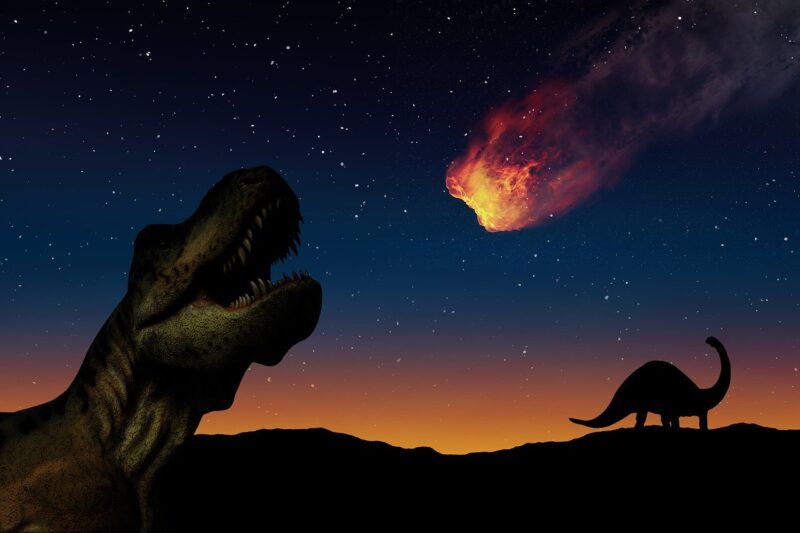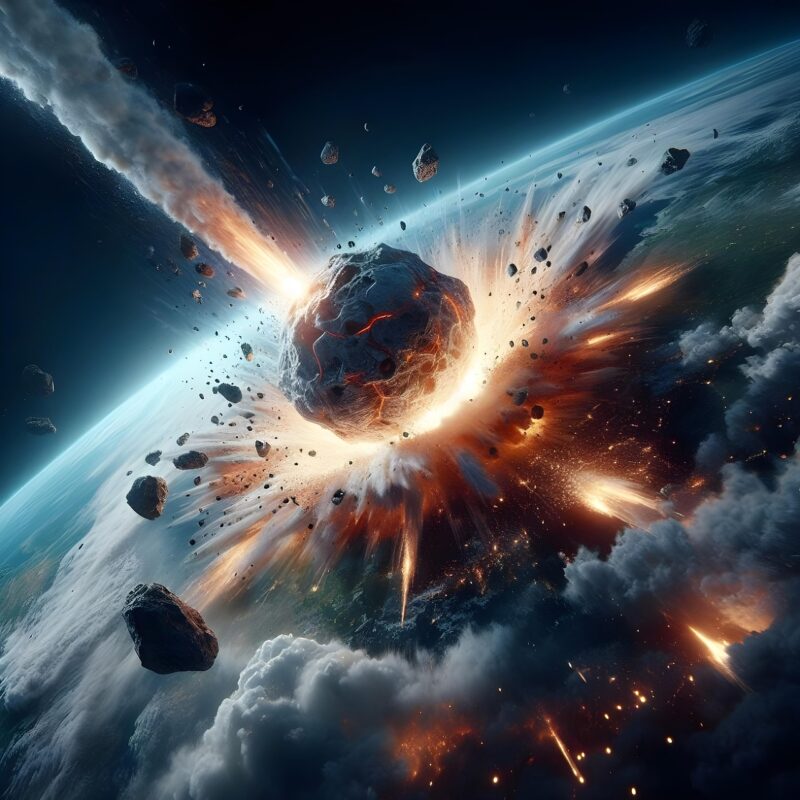What if Bennu hit Earth?
Asteroid Bennu is a 1,640-foot-wide (500-meter-wide) space rock that has a 1-in-2,700 chance of hitting Earth in September 2182. Two scientists from the IBS Center for Climate Physics at Pusan National University in South Korea have modeled what might happen if Bennu struck Earth. They said on February 5, 2025, the results could be worse than the dinosaur-killing asteroid. Their simulations showed severe disruptions in climate, atmospheric chemistry and global photosynthesis. For three to four years, temperatures would drop, precipitation would decrease and some 32% of our protective ozone layer could be destroyed.
The immediate impacts of such an asteroid strike would be an increase in thermal radiation, earthquakes and tsunamis. But the researchers zeroed in on the long-lasting climatic effects. The new research looked at what would happen to our climate and how that would impact both terrestrial and marine ecosystems.
The scientists published their peer-reviewed results in the journal Science Advances on February 5, 2025.
Worse than the dinosaur-killer?
The asteroid that killed off the dinosaurs, Chicxulub, was probably some 20 times larger than Bennu. So how could the result of a Bennu strike be worse?
The researchers used four different models for amounts of dust injected into our atmosphere: 100 tons, 200 tons, 300 tons and 400 tons. In all these scenarios, the paper said that nearly 90% of total dust nanoparticles stay in the atmosphere for almost 1 year. But by the second year, dust particles fall out of the atmosphere more quickly in the 400-ton scenario. That’s because more dust means they’re more likely to bump into each other more quickly, creating larger particles that fall out of the atmosphere sooner. The Chicxulub event probably had some 2 million tons of dust ejected into the atmosphere, which would have allowed for a quick removal of 99% of the dust within 3 months.
So the scientists concluded that a medium-sized asteroid, like Bennu, is more likely to produce an amount of dust that would hang around in the atmosphere for longer. The paper said:
Our simulations suggest that dust particles have much longer atmospheric residence times than for the Chicxulub impact.

How bad would it get?
The major impacts from a Bennu-sized asteroid strike would last for three to four years. In the 400-ton scenario, we could expect temperatures around the globe to drop about 7 degrees Fahrenheit (4 degrees C). Precipitation would decrease by some 15%. And we would lose some 32% of our protective ozone layer. These results would all vary locally.
Lead author Lan Dai of Pusan National University said:
The abrupt impact winter would provide unfavorable climate conditions for plants to grow, leading to an initial 20 to 30% reduction of photosynthesis in terrestrial and marine ecosystems. This would likely cause massive disruptions in global food security.
A more-resilient ocean
Surprisingly, the plankton in the ocean would recover much more quickly than terrestrial life. Instead of a slow recovery like terrestrial life, plankton would be mostly recovered in six months. Not only that, but they’d see an increase above normal conditions. Co-author Axel Timmerman of Pusan National University said:
We were able to track this unexpected response to the iron concentration in the dust.
If the asteroid is iron-rich and hits an iron-rich area of Earth, this material that blasts into the atmosphere could then add iron to areas of the ocean that are otherwise low in this key nutrient for algae. Thus, the increase in iron would trigger algae blooms.
Dai said:
The simulated excessive phytoplankton and zooplankton blooms might be a blessing for the biosphere and may help alleviate emerging food insecurity related to the longer-lasting reduction in terrestrial productivity.
A mission to Bennu
Scientists have already undertaken a mission to Bennu and retrieved samples for study. NASA said on January 29, 2025, that the samples contain molecules that, at least on Earth, are the building blocks of life. As Paul Scott Anderson reported for EarthSky:
Bennu contains all 5 of the nucleobases that form DNA and RNA on Earth. The asteroid also contains 14 of the 20 amino acids found in known earthly proteins. But – in a fundamental way – the chemical structure of the molecules in Bennu aren’t like those on Earth. Earthly amino acids found in living organisms typically have a “left-handed” chemical structure. Bennu appears to contain nearly equal amounts of ‘left-handed’ and their “right-handed,” or mirror-image, forms. What does it mean? Scientists aren’t sure yet.
Other asteroids and Earth impacts
Bennu currently only has 1-in-2,700 odds of hitting Earth in 2182. So, not likely if you’re the betting sort. There are other asteroids that have better odds, notably the new asteroid 2024 YR4, which currently has 1-in-53 odds of hitting Earth in 2032. But this asteroid is also quite a bit smaller, somewhere between 130 to 300 feet (40 to 90 m).
If 2024 YR4 hits Earth, scientists said its blast damage would stay local, within 30 miles (50 km) from the site of impact. This asteroid strike would be more comparable to the asteroid that hit near Tunguska, Siberia, in 1908. That strike felled reindeer and flattened some 1,000 square miles (2,600 square km) of forest, in a sparsely populated area.
But even smaller asteroids strike Earth all the time. In 2024, astronomers discovered small asteroids just before they impacted with Earth on four different occasions. Because they were all small space rocks, they mostly burned up in Earth’s atmosphere and caused no damage on the ground.
What’s next in the study of ‘If Bennu hit Earth?’
The scientists would next like to study how the human population would react to such an impact. They’d like to create new models to simulate what the impact would be on humans’ life cycles and their search for food. Timmerman said:
On average, medium-sized asteroids collide with Earth about every 100,000 to 200,000 years. This means that our early human ancestors may have experienced some of these planet-shifting events before with potential impacts on human evolution and even our own genetic makeup.
Bottom line: Scientists have simulated what would happen if Bennu hit Earth. The impact would inject dust into the atmosphere, dropping temperatures, limiting precipitation and depleting about a third of the ozone layer.
Source: Climatic and ecological responses to Bennu-type asteroid collisions
Via Institute for Basic Science
Read our previous article: A Recent Impact on Mars Shook the Planet to Its Mantle
